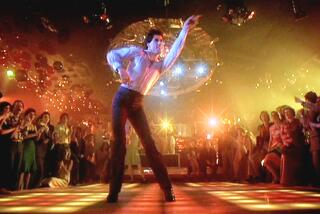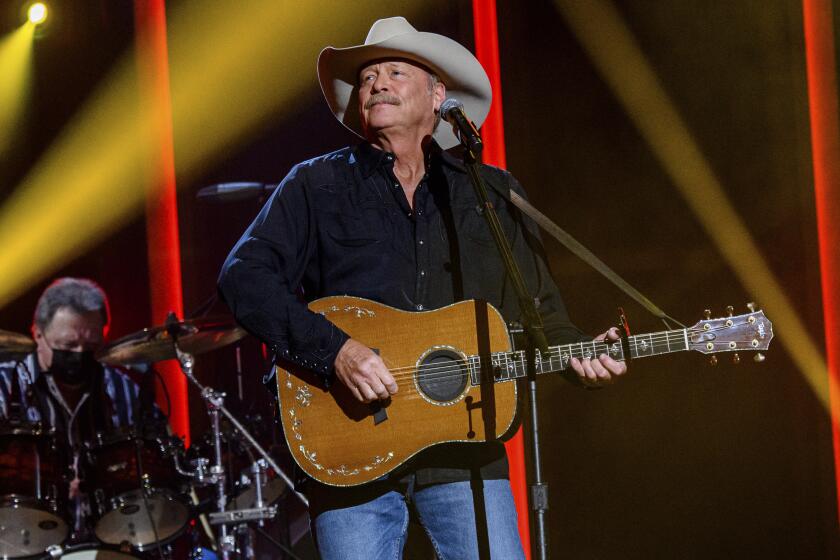Ed Pearl, whose Ash Grove nightclub was at the heart of L.A.’s ’60s music scene, dies
- Share via
Ed Pearl, who owned the landmark folk and blues hot spot the Ash Grove in the 1960s before briefly relocating it to the Santa Monica Pier, has died from complications of COVID-19 and pneumonia.
Pearl died Sunday in a Los Angeles hospital, his daughter, Jolie Pearl, said. Pearl, who had been living in an assisted living facility with Alzheimer’s disease for about a year, was 88.
For the record:
8:57 a.m. Feb. 10, 2021A previous version of this obituary said that Pearl’s parents fled the Nazis in Europe. They fled attacks on Jews in Russia.
The soft-spoken East L.A. native brought raw blues and even rawer Appalachian folk music to the heart of Los Angeles, when the Ash Grove was housed on Melrose Avenue in what’s now West Hollywood. The venue became a training ground for artists such as Ry Cooder, Jackson Browne and Linda Ronstadt.
The club also housed a record store and a music school.
Once a folk and blues hot spot, the Ash Grove is testing the waters again, taking its wide-open mind-set to a new site on Santa Monica’s pier.
Pearl believed part of the club’s appeal was that it showcased a variety of regional and ethnic music, from gospel to jazz, Jewish to Latino, and presented it with respect. The club “educated a lot of people to the cultures of America,” Pearl told The Times in 1993. “It legitimized the American potpourri and gave it a dignified stage.”
Unabashed about his politics, Pearl, who helped found the Peace & Freedom Party in 1967 as the Vietnam War deepened, made enemies along the way. He long believed that a series of arson-related fires at his club were attempts to stop his social activism.
Under Pearl’s direction, the Ash Grove was billed as the “West Coast university of folk music.” Hundreds of artists appeared there, ranging from New Orleans zydeco master Clifton Chenier to Jim Croce, Johnny Cash and the Byrds.
The Ash Grove hosted events and was a meeting place for people involved in a variety of causes, including the emerging civil rights movement. It served as the center of Los Angeles’ highly influential folk music scene when it was in West Hollywood from 1958 until the 1973, when a fire closed it there for good.
“We all came in on the kind of progressive, political stream to the music,” said his younger brother Bernie Pearl, who washed dishes and booked acts at the Ash Grove. “That it was not about commercial music — [it was about] the union songs and the freedom songs — it was never strictly about business. You had to do business, but he took chances on somebody because he liked the music. He would bring in people fresh off the farm in Appalachians and he would put them on.”
This time, Ed Pearl is sure, it will happen.
Born Edwin Morton Pearl on May 24, 1932, Pearl grew up in Boyle Heights. He was the middle of five children born to parents who had both fled the violent attacks on Jews in Russia in the early 1900s. The two met at a Jewish youth social club in Los Angeles. His father, a tool and die maker, was an intellectual who was not religious, though his mother was.
“Growing up in Boyle Heights, there was a lot of different racial and ethnic communities there,” Pearl’s daughter Jolie said. “He had a lot of different kinds of friends, and that set the stage for him to be open to other cultures. I got the feeling that he always enjoyed music. He was curious about life and determined to make his own way — through music or social activism.”
His older sister, Bernice, hosted the Ash Grove’s predecessors — the famed hootenannies — at her home in the early 1950s. Pearl was attending UCLA at the time and was a member of the university’s folk song club that produced concerts, including Pete Seeger’s appearance at the university while he was blacklisted.
“That was probably his formal entree into combining music and politics,” his daughter said.
According to letters reviewed by his daughter, Pearl would stay up all night having discussions and playing music instead of studying. He ultimately dropped out and convinced several family members to help him finance the Ash Grove, which began as a coffeehouse before evolving into a shrine for the emerging folk and rock musicians of the 1960s.
As years went by, Pearl struggled with the corporate evolution of the music industry, having to book talent through agents, managers and other middlemen rather than picking up the phone and convincing an artist directly to appear.
After years of delay, the club finally reopened on the renovated Santa Monica Pier in 1996, but its beachside tenure was short-lived. It shut in 1997 when the city evicted the beleaguered nightspot.
During the two decades between the closing of the original Ash Grove and its reopening on the pier, Pearl made a living producing music and theater, including productions for the San Francisco Mime Troupe and El Teatro Campesino. In 1997, Pearl was awarded the Center for the Study of Political Graphics’ Culture of Liberation award. A mixed-media piece he wrote on apartheid was performed in 1987 at high schools and junior high schools throughout the Los Angeles Unified School District.
His venue eventually lived on as the Ash Grove Foundation, a philanthropic organization that stages concerts, lectures and community performances to support young artists.
Pearl is survived by his daughter and granddaughter, Ari Pearl-Butler, as well as Bernie Pearl and two other brothers, Stanley Pearl and Sherman Pearl.
More to Read
The biggest entertainment stories
Get our big stories about Hollywood, film, television, music, arts, culture and more right in your inbox as soon as they publish.
You may occasionally receive promotional content from the Los Angeles Times.











